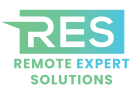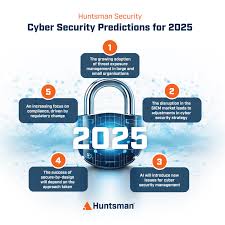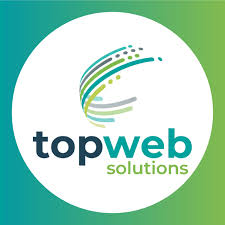At this era of technology, opting for in-house IT or outsourced IT support can be a make-or-break decision for the effectiveness, security, and scalability of a business. As more businesses are now highly dependent on digital operations, a proper IT infrastructure is vital to remain competitive. But how do you select the ideal model for your business?
Understanding In-House IT Support
In-house IT support involves an employment agreement with permanent IT experts who work in your organization. They carry out routine technical tasks like system maintenance, technical support, data security, and network services. Because they are employed in your organization, they are familiar with your internal culture, business processes, and objectives.
What Is Outsourced IT Support
IT support outsourcing involves hiring third-party vendors, known as Managed Service Providers (MSPs), to manage your company’s technology needs. The services may include helpdesk services, cybersecurity, cloud computing, data backup, to application management. The services are usually paid for on a monthly basis or pay-as-you-go plan.
Cost Comparison: Effective Budgeting for IT
One of the biggest differences between in-house and outsourced IT support is the cost structure. In-house staff has a high upfront cost—salaries, benefits, training, hiring, office room, and equipment. An example is that a typical IT manager can range anywhere from $80,000 to $120,000 a year, not including other personnel and software costs.
IT support outsourced is also cheaper in general. You only pay for what you use with no overhead. It is most appropriate for small firms, start-ups, or those with lean IT budgets. Subscription-based is more manageable when it comes to cash flow and yet still have access to a broad array of services.
Specialization and Expertise: Who Brings More to the Table
Though in-house personnel may provide specialized attention, their own skills might be constrained. They may be unaware of the most recent developments in cybersecurity, compliance with regulations, or cloud computing.
IT outsourcing companies, nevertheless, have access to international reservoirs of highly experienced professionals who stay updated with the current advancements in technology and industry developments. Being experienced in a variety of assignments, they can provide more efficient and quicker IT solutions that best meet your business requirements.
Control and Customization: The Benefit of Being Internal
Internal IT staff provide more control. They know your organization’s systems and employees, so they can deliver very tailored solutions. This intimate internal understanding often equates to quicker and more accurate help.
Off-shore IT firms, although remote, can provide personalized services. Although it may take them some time to learn your systems at first, most experienced MSPs maintain thorough onboarding procedures to tune their services in accordance with your business requirements.
Response Time and Availability: Who Repairs Issues Quicker?
IT staff are based in-house and answer IT issues more quickly. They can easily visit departments and systems, keeping downtime to a minimum and business up and running.
Vendors that outsource take longer when making on-site calls, but they tend to provide 24/7 support, proactive monitoring, and remote troubleshooting by way of SLAs. The majority of issues are simple to deal with remotely—holidays and after-hours, as well.
Security and Compliance: Who Makes Your Data Safer
Cyber threats such as ransomware, phishing, and insider attacks are increasing. Internal staff may not have the tools or training available to them to monitor for and remove threats before they ever happen. Compliancy with legislation such as GDPR and HIPAA also necessitates specialist knowledge.
Outsourced IT solution providers tend to have robust security capabilities—firewalls, encryption, endpoint security, and ongoing monitoring. Regulatory compliance expertise is included in most MSPs, making them a great fit for financial services, healthcare, and e-commerce.
Scalability: Does Your IT Scale with Your Business?
Your company expands, and so does the requirement for IT. Bringing on additional in-house staff involves new hires, hardware purchases, and training—a labor-intensive and time-consuming process.
Outsourced IT services are more agile by nature. Bringing on new employees, streamlining a new product, or opening up a new building? Your MSP can scale up services quickly and efficiently without overextending your assets.
Business Size and Industry Needs: What’s Best?
The optimal IT support model is also industry- and firm-size-dependent. Larger firms usually have in-house IT personnel for control and management of proprietary systems. Mid-sized and small firms usually gain the cost savings and expertise of outsourced IT.
Vertical industries such as finance, law, and healthcare can have in-house specialists for regulation. Alternatively, technology companies or SaaS providers might prefer internal resources for faster deployment and innovation cycles.
The Hybrid IT Model: Best of Both Worlds
Most contemporary companies have a hybrid model for IT. This is a blend of a small number of in-house staff for strategic direction and outsourced vendors for routine task management like servers, clouds, and security.
A hybrid model leverages the best of both worlds—local control with cost advantage and expertise advantages of outsourcing. It suits companies in growth mode that require flexibility and dependability.
The Last Word: What Should You Consider?
Before in-house or outsourced IT decision-making, assess your technology requirements currently and in the future. Consider your:
- Budget
- Industry regulations
- Desired level of control
- Level of technology complexity
- Growth opportunities
Consider asking yourself:
- Can our internal personnel handle modern cyber threats?
- Can we afford to hire and retain skilled IT experts?
- Do we need around-the-clock assistance?
- Are we meeting industry standards?
The responses will inform your IT strategy.
Conclusion: Align IT Strategy with Business Goals
Selecting between in-house and outsourced IT is not a case of one-size-fits-all. In-house IT is centered on control, quicker internal communication, and greater integration. Outsourced IT is centered on getting access to expertise, cost benefit, and scalability.
By positioning your IT support model within your business strategy, current performance, and future growth direction, you will be able to make a smart choice. In whatever model you decide to utilize in-house, outsource, or hybrid, your IT infrastructure should be capable of empowering your workers, protecting your data, and facilitating your company’s digitalization.
Contact Us
Admin@remotexpertsolutions.com






